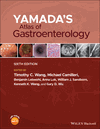Chronic infections of the small intestine
Summary
This chapter offers diverse images that provide an overview of the chronic infections of the small intestine and aims to provide a synopsis through pictures and illustrations rather than through text. Barium studies of the small intestine usually are abnormal in Whipple disease and may reveal a characteristic but nonspecific finding of marked thickening of the mucosal folds. Histoplasmosis is primarily a pulmonary opportunistic infection that can become disseminated in immunocompromised patients. The small intestine is reportedly involved in 20% of cases of disseminated histoplasmosis, but just 3–12% of affected patients have intestinal symptoms. The small intestine is involved in about 5% of patients with disseminated aspergillosis. Candida species are the fourth most common organisms isolated from the blood of hospitalized patients and are normal colonizers of the gastrointestinal tract.



